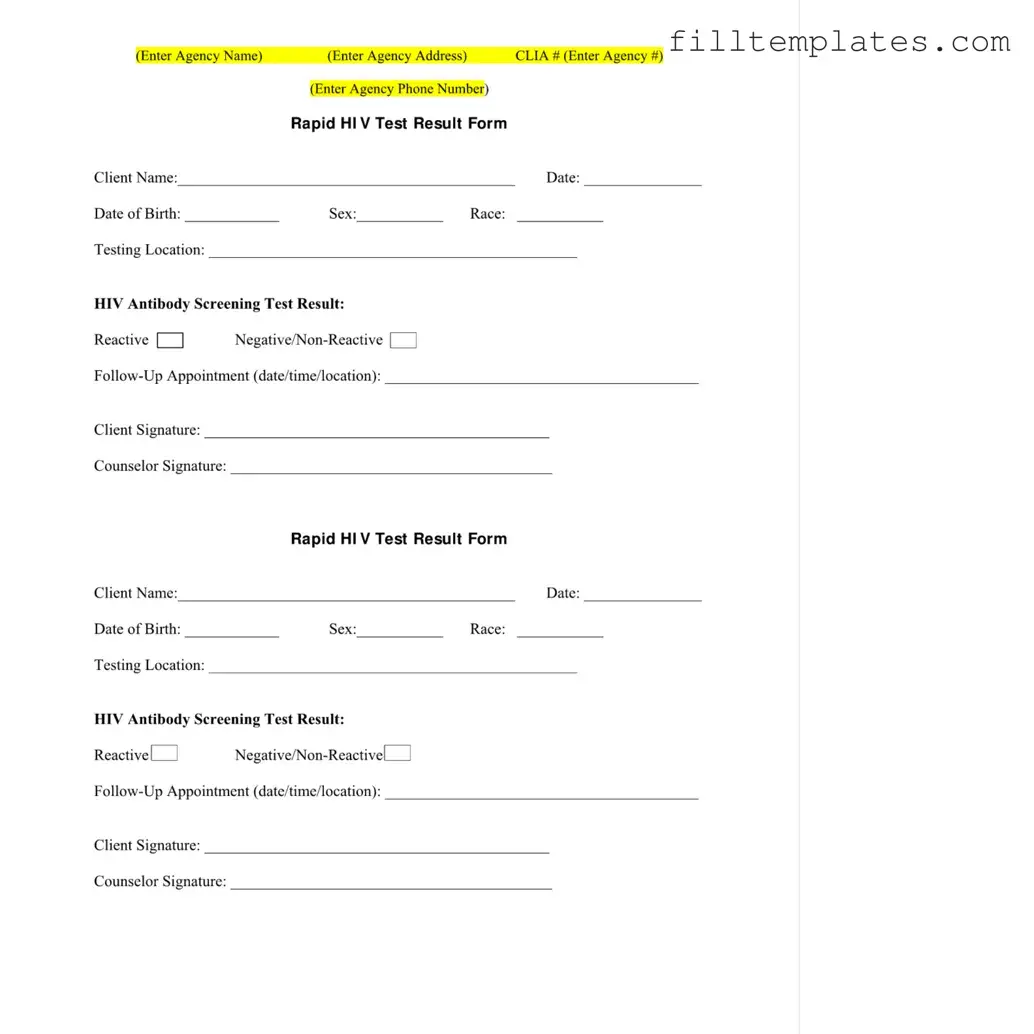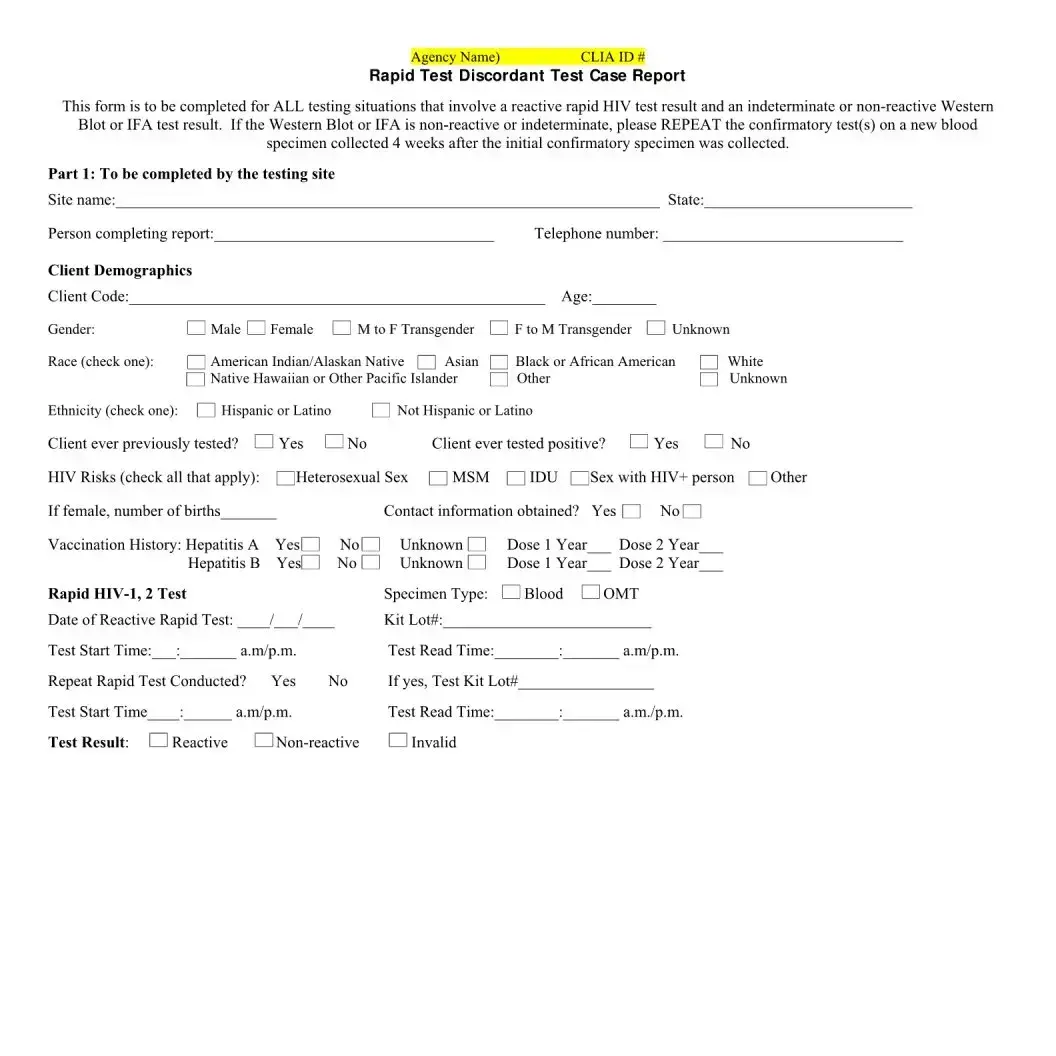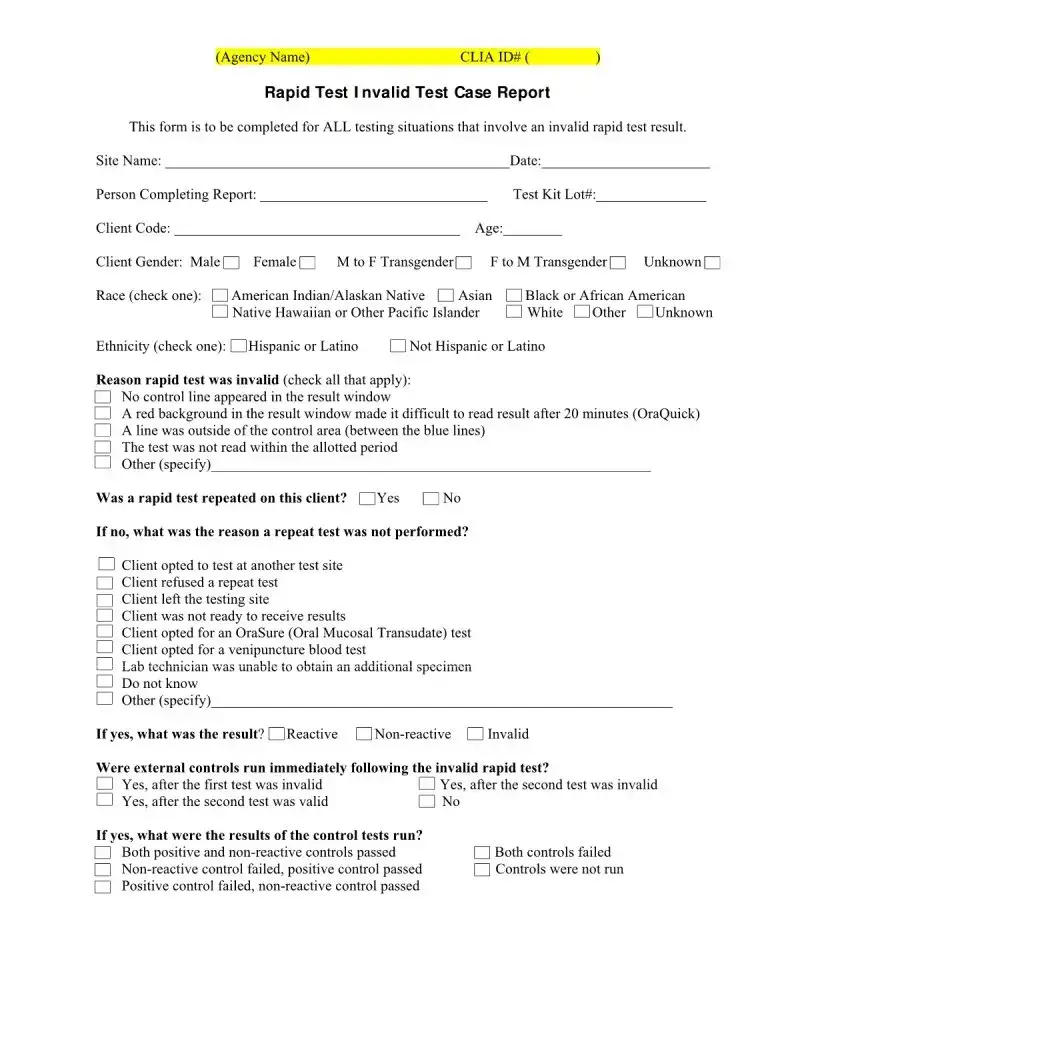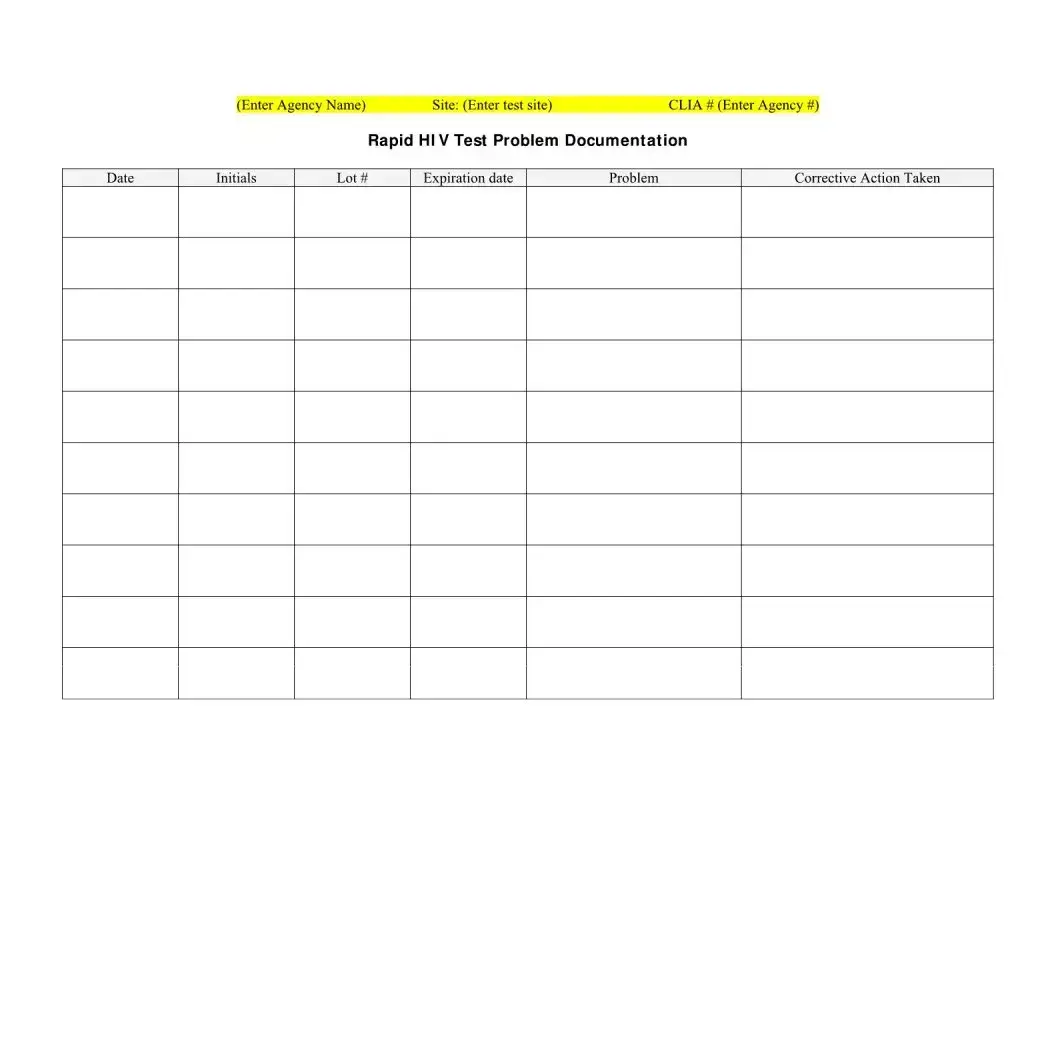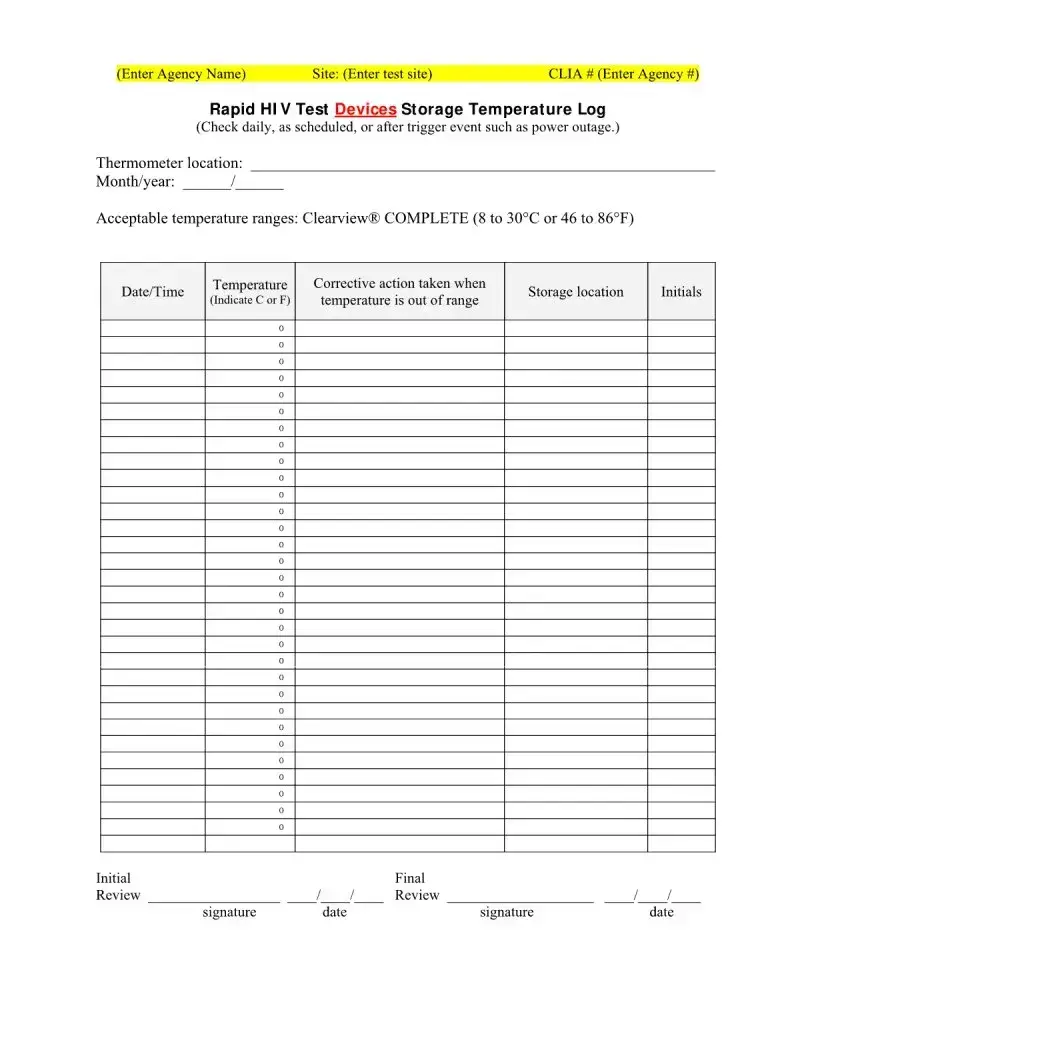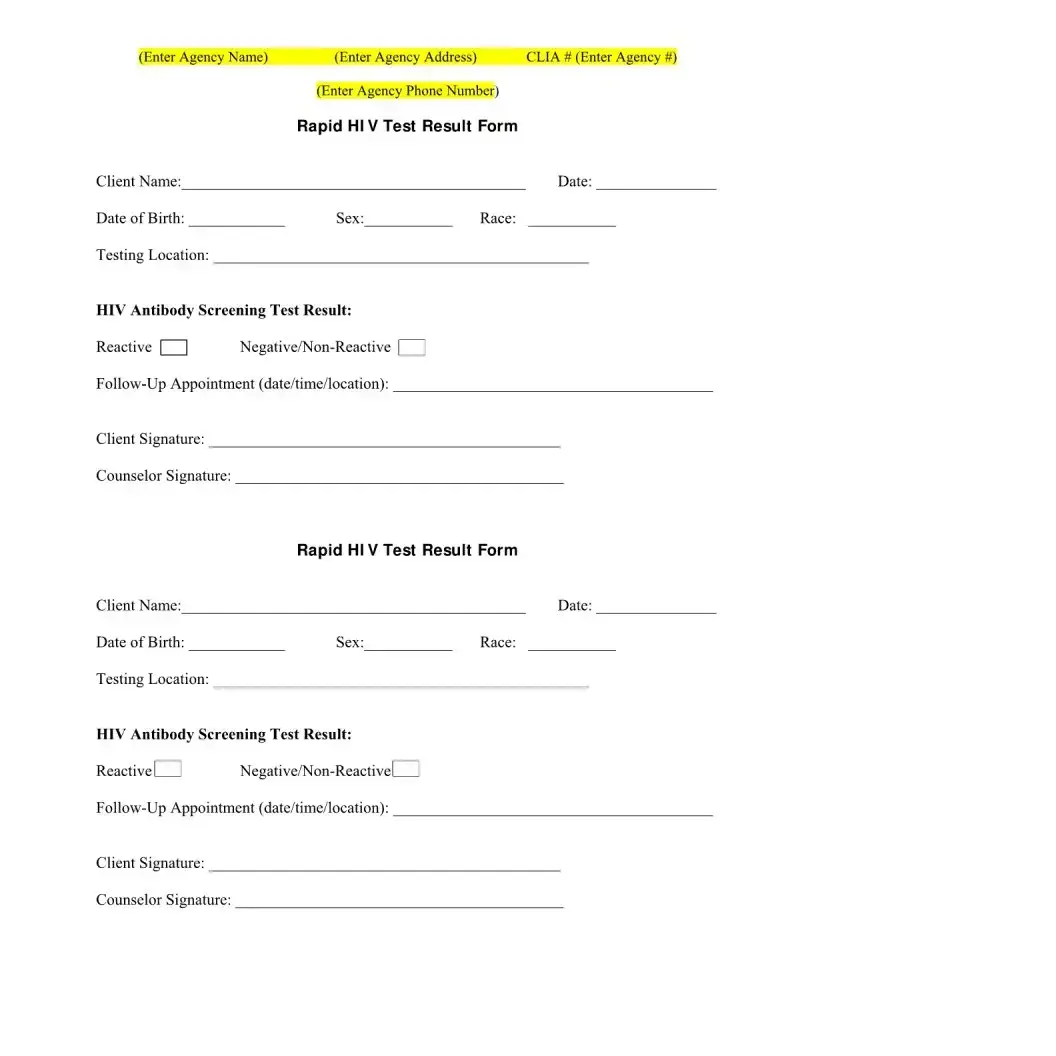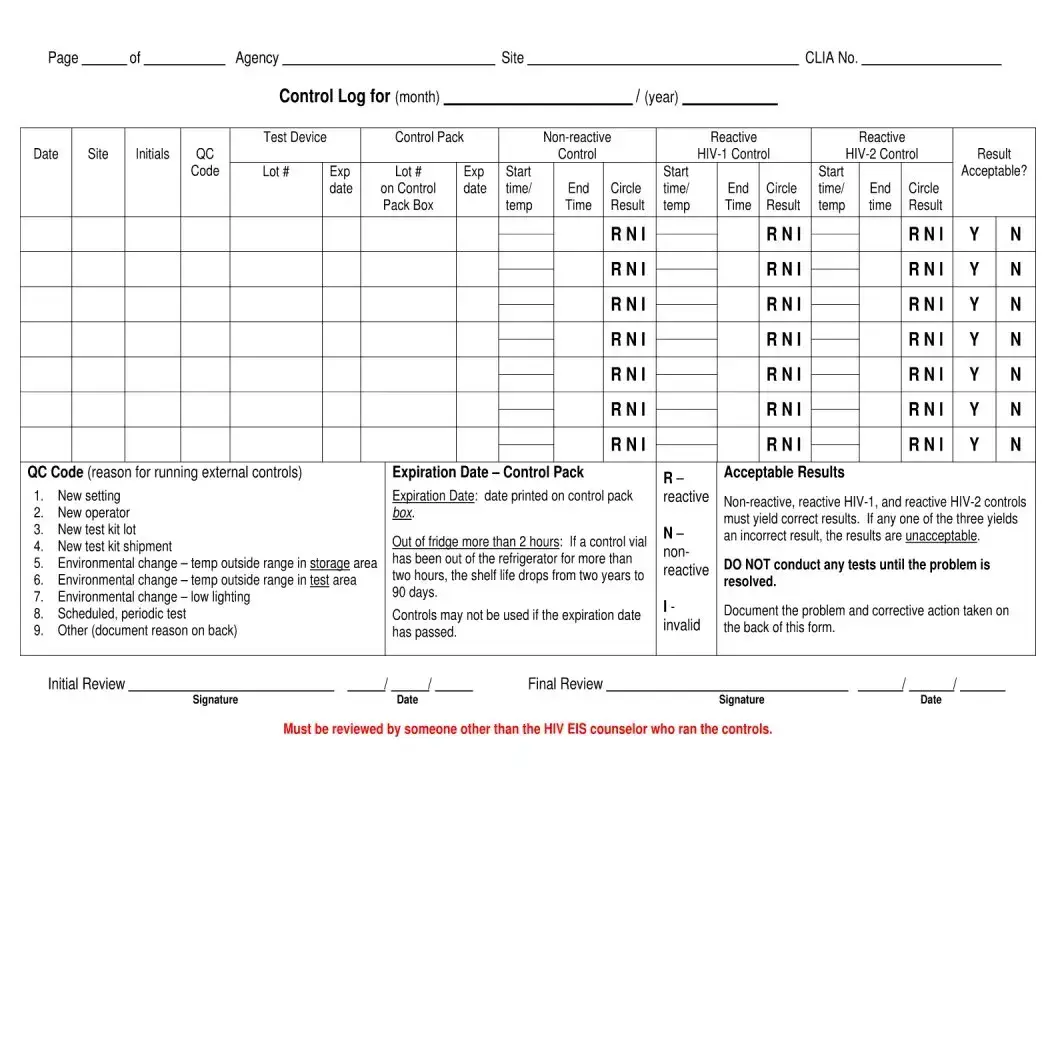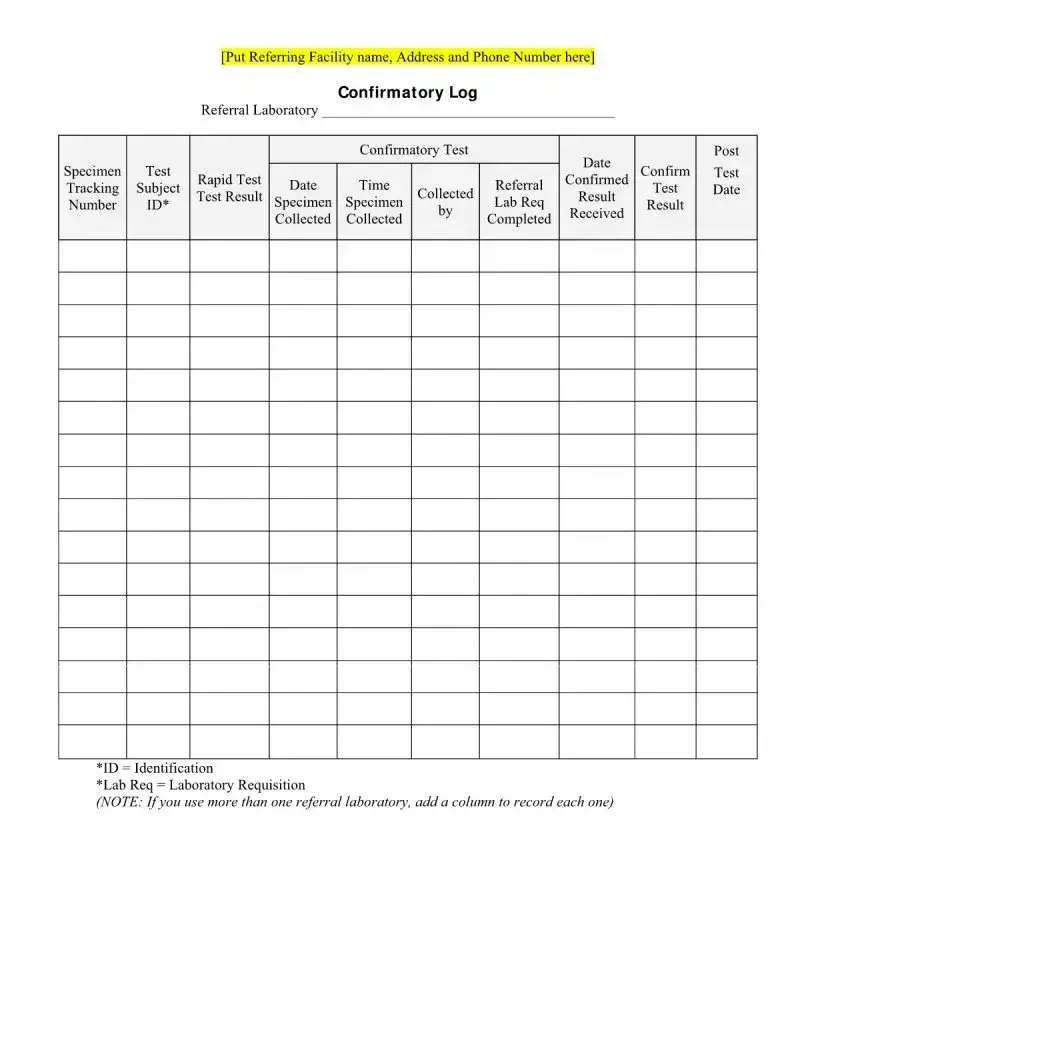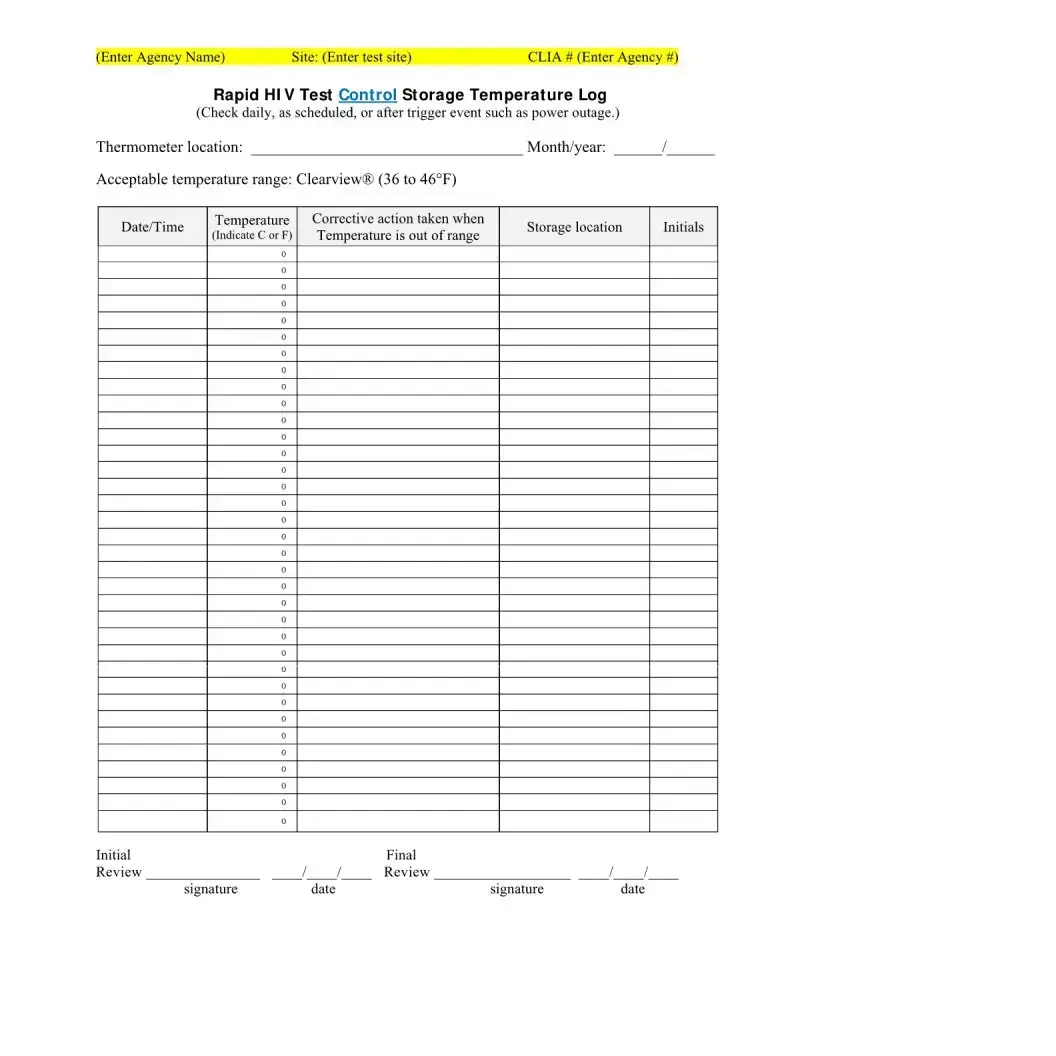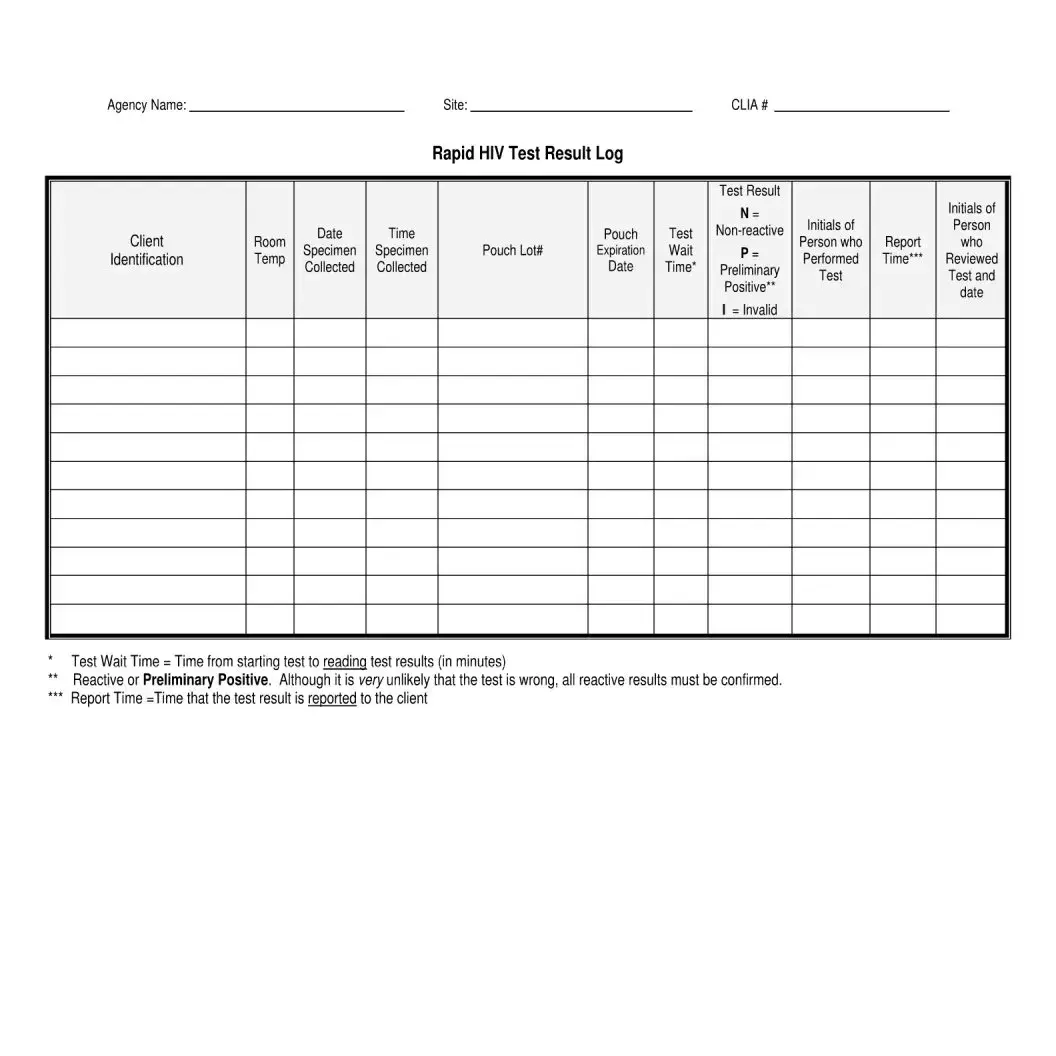The Negative HIV Test form is an essential document used in the process of HIV testing, providing crucial information about the test results and the testing procedure. This form typically includes the agency's name and address, along with its CLIA number, which ensures compliance with federal regulations. Key details such as the client's name, date of birth, race, and the testing location are recorded to maintain accurate records. The form prominently displays the result of the HIV antibody screening test, indicating whether the result is reactive or non-reactive. Additionally, it outlines the need for follow-up appointments, ensuring clients receive necessary support and information. Both the client and the counselor are required to sign the form, confirming that the information is accurate and understood. Furthermore, the form includes sections for temperature logs related to the storage of rapid HIV test devices and controls, emphasizing the importance of maintaining proper conditions for accurate testing. This comprehensive approach not only facilitates effective testing but also supports the health and well-being of individuals undergoing HIV testing.
